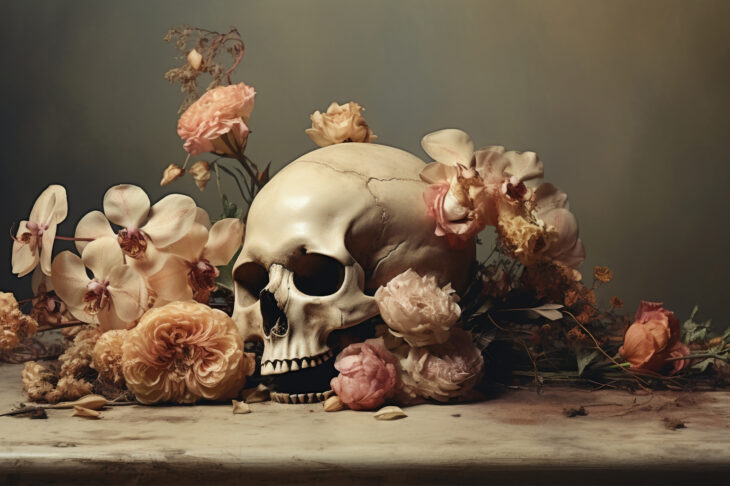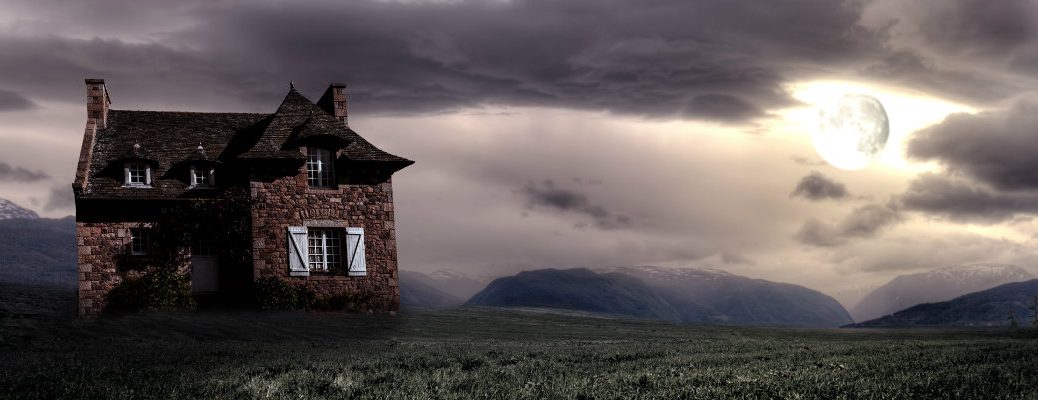
Guide to Writing Horror Fiction Part 2
Head online and you’ll find literally thousands of people who love writing horror fiction, some of them published in the mainstream, others self-published. Horror stories and novels have endured over the last couple of centuries with many characters such as vampires and werewolves regularly being reinvented.
If you haven’t yet read part 1 of our series, you can find it here.
At the heart of modern horror fiction lies the exploration and exploitation of human fears and anxieties. It aims to provoke a visceral reaction in its audience, often through the use of graphic violence, unsettling imagery, and supernatural or psychological elements.
Modern horror fiction often reflects contemporary societal issues and concerns, such as the rise of technology and globalization or the loss of traditional values. It can also challenge and subvert conventional moral and ethical norms, pushing the boundaries of what is considered acceptable in storytelling.
In addition to its ability to frighten and entertain, horror fiction can also serve as a means of catharsis, allowing readers to confront and process their own fears and anxieties in a safe and controlled environment. At the heart of all this is ‘fear’ and understanding what this means is integral to the success of the modern horror writer.
What is Fear?
Fear is a complex emotion that is triggered by the perception of danger or threat. It is a survival mechanism that helps individuals respond to potential danger in their environment. When a person experiences fear, they may feel a range of physical and psychological symptoms, such as increased heart rate, rapid breathing, sweating, and a sense of dread or panic.
Fear is an important part of the human experience, and it can have both positive and negative effects. On the one hand, fear can help to keep individuals safe by alerting them to potential dangers and motivating them to take action to avoid harm. On the other hand, excessive or chronic fear can be debilitating, leading to anxiety disorders and other mental health problems.
In literature and other forms of media, fear is used to create suspense, horror, and tension. Horror stories, in particular, are built around fear and the fear response, as they aim to elicit terror of varying levels in the reader. The use of fear in these contexts is seen as a way to explore human experiences and challenge and engage the reader or viewer in new and unique ways.
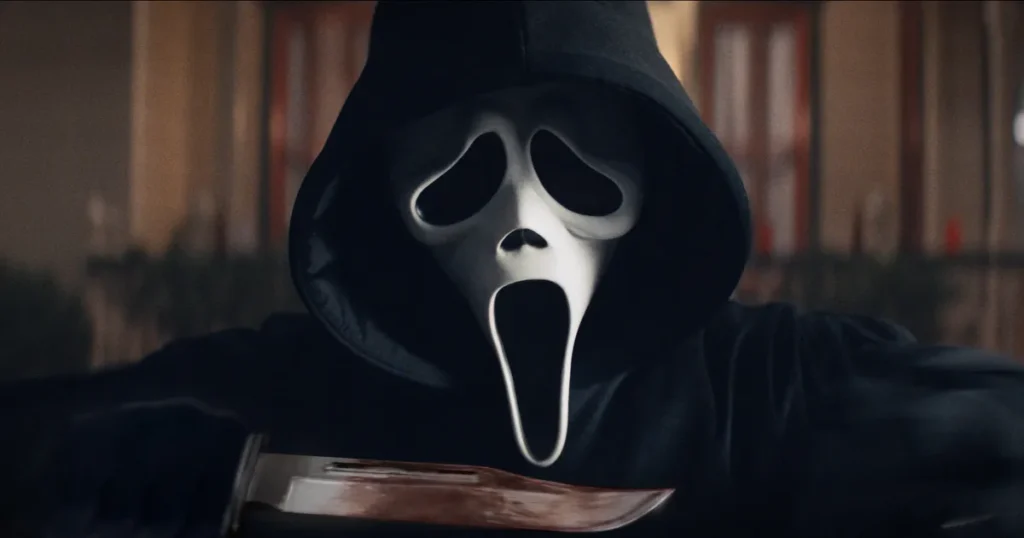
Fear and the Brain
Fear is a complex emotional and physiological response that involves multiple parts of the brain:
- Amygdala: The amygdala is a small almond-shaped structure in the temporal lobe that is responsible for processing emotional responses, including fear. When a person perceives a potential threat, the amygdala sends a signal to the rest of the brain, triggering the flight/fight response.
- Hippocampus: The hippocampus is involved in processing and encoding memories, including memories of traumatic and terrible events. It is also involved in regulating the fear response in some ways, helping to dampen an individual’s response once the threat has passed.
- Prefrontal cortex: The prefrontal cortex is responsible for executive functions, such as decision-making and impulse control. It can also help to regulate the fear response, allowing individuals to make rational decisions and act appropriately in response to fear. When we think we see something in the dark, for example, our rational brain can determine that is not a ghost because such things don’t exist.
- Thalamus: The thalamus is a relay centre for sensory information in the brain, and it is involved in transmitting information about potential threats to the amygdala and other parts of the brain.
- Periaqueductal grey: The periaqueductal grey (PAG) area of the brain is a region located in the midbrain that plays a critical role in the processing and regulation of fear. When we encounter a threatening situation, the PAG is activated and sends signals to various parts of the brain, including the amygdala, hypothalamus, and brainstem, which coordinate our physical and emotional response to the threat.
Studies have shown that electrical stimulation of the PAG can elicit fear responses in animals, while lesions or damage to the PAG can result in a reduced fear response. This suggests that the PAG is a key region for fear processing and regulation in the brain.
These brain regions work together to produce the complex and multi-faceted response that we experience as fear. When a person perceives a potential threat, these regions work together to create a rapid and intense response, which prepares the individual to take action to avoid harm. Once the threat has passed, they also work together to help the person calm down and return to a state of relative safety and security.
It’s important if you are writing horror fiction to understand how people respond biologically when it comes to fear and finding out more about what happens in the brain can be quite enlightening.
Avoid These Horror Cliches?
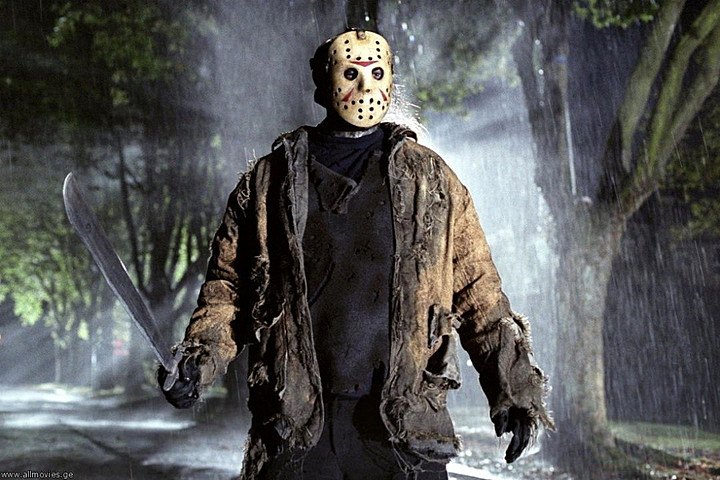
When writing horror, it is important to be mindful of common cliches and to strive for originality and creativity. Here are ten you might want to avoid:
- The Final Girl: The trope of the “final girl,” or the lone survivor who defeats the monster, has become a staple of horror films in the last 40 years. While this can be a powerful narrative device, relying on it too heavily can make the story feel predictable and unoriginal.
- Jump scares: Jump scares are sudden, loud, and often accompanied by a visual shock, such as a monster appearing behind a character when they are looking in a mirror. While jump scares can be effective in the right place, again relying on them too heavily can make the story feel formulaic and a little lazy.
- Haunted Houses: Haunted houses and other eerie locations, such as asylums or abandoned hotels, have been used as a setting for many horror stories. While these can be creepy, they are seen as some as a big cliché nowadays.
- Possession and Exorcism: The idea of a person being possessed by a demon or other evil entity and requiring an exorcism is another common trope in horror. We’ve lost count of the number of films and books that involve a priest and unsuspecting innocent in the last half a century.
- The Killer with a Mask: The idea of a killer or monster wearing a mask to hide their identity is a common trope in horror. From Friday the 13th to Halloween, this genre has been done to death so it might be worth avoiding unless you can add something new.
- The Slasher: The slasher sub-genre, characterized by a masked killer who stalks and murders a group of teenagers, has become a staple of horror too. It’s been reinvented in more recent years but can be a difficult one to pull off in horror writing unless you know how to balance the violence with the storyline tension.
- The Curse: The idea of a curse or ancient evil that has been unleashed and is now terrorizing a group of people is another common trope in horror.
- The Isolation and Desperation of the Characters: Many horror stories rely on the idea of characters are in an isolated location and have no escape from the monster or evil force. John Carpenter’s The Thing is a prime example of this where the victims of the alien monster are thousands of miles from civilisation.
- The Vampire: Our fang toothed friends have been reinvented so many times that they have their own individual sub-genres. While the story is enduring and has its own fanbase, writing a vampire novel can have you to travelling well-worn paths.
- The Twist Ending: The idea of a twist ending, in which the events of the story are revealed to be something other than what they seem, is as common in horror as it is in detective novels. The idea of a twist ending is that no one sees it coming and that can be very difficult to pull off.
These are all staples of horror fiction writing and they can all be seen as cliches (as vampires, werewolves and ghosts can). The key when writing in any of these sub-genres is to bring something new and refreshing.
Have Fun While Writing Horror
Writing horror can be both challenging and rewarding. It’s important to approach the process with a sense of excitement and playfulness to keep the creative juices flowing and to ensure that the final product is both enjoyable and effective. British horror writer James Herbert often said if he wasn’t laughing gleefully while writing, he wasn’t producing something truly horrific.
You don’t have to go that far but here are some tips for having fun while writing horror:
- Embrace the genre: Embrace the conventions and tropes of horror, but also challenge yourself to subvert them in new and creative ways. Don’t just dish out the same old thing.
- Play with your fears: Use your own personal fears and phobias as inspiration for your writing. This can help you tap into a deeper, more primal sense of terror that will resonate with readers. It can also make your writing genuinely frightening.
- Experiment with different types of horror: Try writing in different sub-genres of horror, such as supernatural horror, psychological horror, or slasher horror. Experimenting with different styles and approaches can help you find your voice as a horror writer.
- Collaborate with others: Writing can be a solitary pursuit so working with others can help you stay motivated and inspired. Consider joining a writing group or joining up with a writing partner who shares your passion for horror.
- Have fun with the writing process: Don’t take yourself too seriously and, again, don’t be afraid to try new things. Experiment with different styles and approaches, and don’t be afraid to make mistakes. The process of writing should be enjoyable, so have fun with it.
Having fun while writing horror will make a difference in the final product by allowing you to approach the genre with a sense of playfulness and excitement, which can make the writing process more enjoyable and also result in a more effective and terrifying story. When you enjoy the process of writing, it shows in your work, and this can make a huge difference in how well your story is received by readers.
First Draft vs Second Draft: Where the Work Really Begins
Writing a first draft is just the beginning of the journey to creating a finished novel. The trouble is that most beginner horror fiction writers don’t understand this. Writers like Stephen King will often go through many different drafts before their book is finished.
Here are some tips for moving your first draft to a polished, publishable novel:
- Revise, revise, revise: The first draft is just the starting point. Be prepared to revise and rework your story multiple times. In fact, find as much joy as you can in the process of honing your novel or short story to perfection.
- Get feedback: Share your work with beta readers, writing groups, or a professional editor. This can help you get a fresh perspective on your writing and identify areas for improvement.
- Address pacing issues: Check the pacing of your story and ensure that it moves smoothly from start to finish. Make sure there are no dull spots or over-written sections that slow down the story. When this happens readers are more likely to put the book down and forget about it.
- Develop your characters: Make sure your characters are well-defined and consistent. Ensure that their motivations and actions make sense and that they are integral to the story.
- Strengthen your plot: Ensure that your plot is tight, logical, and engaging. Make sure there are no plot holes or inconsistencies and that the story builds to a satisfying conclusion.
- Polish your prose: Work on making your writing polished and professional. Pay attention to sentence structure, grammar, and vocabulary. Try reading out loud to get a better understanding of how you are writing and how the words sound.
- Be willing to cut: Be willing to cut scenes, characters, or even entire subplots if they don’t contribute to the overall story. You don’t have to throw these scenes or people away, hang on to them in a separate file on your laptop and go back to them at a later date. They might be an inspiration for something new.
- Don’t rush the process: Allow yourself time to revise and revise again. Writing a finished novel takes time and patience, so don’t rush the process.
- Know when to stop: On the other side of this is the ability to know when you are finished and ready to publish. Not easy for new writers and that’s where beta readers can be useful.
Should You Hire an Editor?
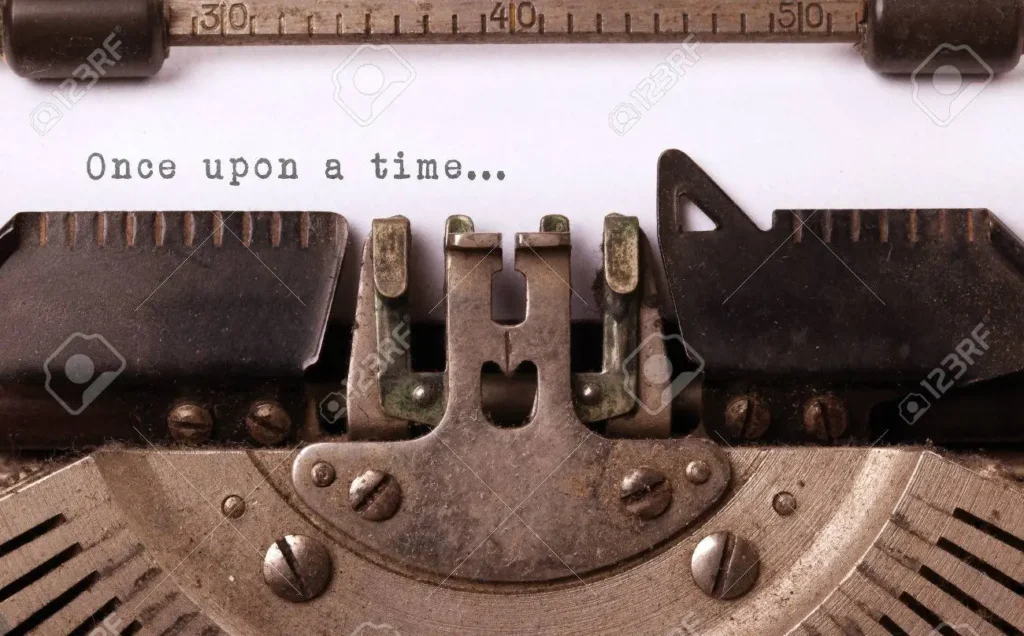
The length of time you should leave your first draft before editing and rewriting depends on a variety of factors, including your personal writing process and your goals for the project. However, there are some general guidelines that can be helpful.
- Put it aside for a few days or weeks: It’s a good idea to take a break from your draft after you’ve finished the first pass. This allows you to step back and gain some perspective on the work and can help you approach the editing process with fresh eyes.
- Revisit with a critical eye: Once you’ve taken a break from your draft, it’s time to start the editing process. Approach your work with a critical eye, looking for areas that need improvement or clarification.
- Take your time: Don’t rush the editing process. Take the time to really delve into your draft and make changes as needed. Be prepared to revise multiple times before you reach a final draft.
Of course, length of time you should leave your first draft will depend on your personal writing process and goals. Some writers find that they need a longer break before they can approach their work objectively, while others are able to edit their work more quickly. The important thing is to find what works best for you and to be patient and persistent as you work towards a final draft.
Whether you should hire an editor or not is an interesting point for newbie writers. It can be expensive and finding a good editor is challenging. You shouldn’t be hiring an editor until you have finished your own adjustments. Another option which many self-publishing writers use is to access beta readers online who can give their first impressions of your work, often for free.
Self-Publishing vs Finding a Publisher for Horror Fiction
The choice between self-publishing and finding a traditional publisher as a first-time novelist depends on several factors, including your goals, resources, and the type of book you’ve written. Here are some pros and cons of each option you should consider:
Self-publishing
Pros:
- Complete control over the publication process, including design, marketing, and distribution.
- Faster publication timeline, since you don’t need to wait for a publisher to accept your book.
- Higher royalty rates because you don’t have to split the profits with a publisher.
Cons:
- Greater upfront costs, since you’ll be responsible for editing, cover design, and marketing expenses.
- Lack of industry recognition and credibility that comes with being published by a traditional publisher.
- More competition, since anyone can self-publish a book.
Finding a traditional publisher
Pros:
- Industry recognition and credibility that comes with being published by a traditional publisher.
- Access to resources, such as professional editors and marketing teams, that can help improve your book and reach a wider audience.
- Less financial risk, since the publisher will bear some of the costs of publishing and marketing the book.
Cons:
- Longer publication timeline, since you’ll need to find a publisher who is interested in your book and willing to sign a contract.
- Less control over the publication process, including design and marketing decisions.
- Lower royalty rates as you’ll need to split the profits with the publisher.
Ultimately, the best option for a first-time novelist will depend on your goals, resources, and the type of book you’ve written. If you’re looking for industry recognition and a wider audience, working with a traditional publisher might be the best choice. But if you’re looking for more control over the publication process and a higher royalty rate, self-publishing might be a better fit. Consider your priorities and weigh the pros and cons of each option before making a decision.
How to Approach a Publisher
If you have written a novel and are interested in finding a publisher, here are some steps you can follow:
- Research potential publishers: Look for publishers who specialize in your genre and are a good fit for your book. Consider their size, reputation, and the types of books they typically publish.
- Familiarize yourself with the submission process: Each publisher may have different submission guidelines, so make sure you know what is expected of you. This might include a query letter, a synopsis, and a certain number of sample chapters. Keep to their guidelines and keep your fingers crossed.
- Write a compelling query letter: A query letter is your first chance to make a good impression with a potential publisher. Make sure it’s well-written, concise, and engaging. Highlight the strengths of your book, what sets it apart from others in your genre, and why it would be a good fit for the publisher.
- Submit your work: Once you’ve researched potential publishers and familiarized yourself with their submission guidelines, it’s time to submit your work. Be patient and professional and be prepared to receive rejections. Even some of the best have received hundreds if not thousands of rejection letters in the past.
- Follow up if necessary: If you haven’t received a response after a reasonable amount of time, you may consider following up with the publisher to inquire about the status of your submission.
Remember, finding a publisher is a competitive process and many writers receive many rejections before they find a publisher for their work. Stay positive and keep writing, and you’ll find the right publisher for your book. Good luck!
How to Write a Synopsis for Your Horror Novel
A synopsis is a brief summary of your horror novel that provides an overview of the story, characters, and themes. It’s usually one or two pages long and is used to give publishers and agents a sense of what your book is about. Here are some tips for writing a synopsis for your horror novel:
- Focus on the main story: Your synopsis should cover the central plot of your novel, including the protagonist, antagonist, and the conflict they face.
- Highlight key elements: Make sure to mention any unique or distinctive elements of your horror novel, such as the setting, supernatural elements, or key themes.
- Keep it concise: A synopsis should be brief, so focus on the most important details and leave out minor subplots and character details.
- Use active voice: Write in the active voice to make your synopsis more engaging and dynamic. Avoid passive constructions and long, complex sentences.
- Show, don’t tell: Use specific examples and scenes from your novel to illustrate the story and characters, rather than simply describing them.
- Edit carefully: Make sure your synopsis is well-written, free of typos and grammatical errors, and that it accurately represents your novel.
If you are writing are self-publishing and writing a synopsis for potential readers, it should shorter but still a clear, concise, and engaging summary of your horror novel that gives a sense of what the book is about. You should, of course, avoid any major spoilers that could spoil the book for readers.
How to Market Your Horror Fiction
Marketing horror fiction can be challenging, but with the right strategies in place, you can reach a wider audience and build a following even if you are self-publishing. Here are some top tips for marketing your horror novel:
- Build your author platform: Establishing an online presence through a website, social media accounts, and a newsletter can help you connect with potential readers and build your brand.
- Utilize book review sites: Sites like Goodreads and Amazon can be powerful marketing tools, so make sure to get your book listed on these sites and encourage readers to leave reviews.
- Collaborate with other authors: Partnering with other horror fiction authors or book bloggers can help you reach new audiences and build your visibility.
- Offer giveaways and contests: Running contests and giveaways can be an effective way to engage with potential readers and build buzz around your book.
- Use paid advertising: Consider using targeted advertising to reach your ideal audience on platforms like Facebook and Amazon. Yes, it’s expensive but it can help you get off the ground.
- Use social media: Platforms like Twitter, Facebook, and Instagram can help you promote your book and engage with readers in different ways. Share teasers, behind-the-scenes looks at your writing process and interact with other horror fiction fans and authors.
- Attend conventions and events: Participating in conventions, book festivals, and other events can also help you connect with potential readers and build your following.
- Offer exclusive content: Consider offering exclusive content, such as early access to chapters or behind-the-scenes looks at your writing process, to your email subscribers or social media followers.
- Host virtual events: If you’ve got the personality, think about hosting a virtual book launch or book club to connect with readers and build excitement around your novel.
- Get professional help: If you’re feeling overwhelmed, consider hiring a professional marketer or publicist to help you promote your book and reach new audiences.
Marketing your horror novel requires a combination of creativity and persistence, but with these tips, you can build a following, reach a wider audience, and build buzz around your book.
How to Find Beta Readers for Your Horror Novel
Beta readers can be a great way to get feedback if you are writing horror fiction and the good news is that there are plenty of gore fans who are willing to help.
Here are some tips on finding beta readers and avoiding offense at criticism:
- Join writing groups on Facebook or other social media platforms where you can connect with other writers and readers who might be interested in horror fiction and providing feedback on your work.
- Joining a writing organization can give you access to a community of writers who are willing to exchange feedback and critiques.
- You can ask friends and family members to read your work and provide feedback, but be aware that they may not be the most objective readers.
- Writing workshops are a great place to meet other writers and find potential beta readers who love horror fiction.
- When asking for feedback, be clear about what you are looking for and what kind of criticism you are willing to accept.
As for avoiding offense at criticism, here are a few tips:
- Remember that criticism is a gift: Feedback can help you improve your writing and make your work better. Try to see criticism as a valuable opportunity to grow as a writer.
- Separate the criticism from the person: Don’t take criticism personally, as it’s not a reflection of who you are as a person. Instead, focus on the specific issues raised in the feedback. Yes, it can be painful and some beta readers can go over the top but it’s important to take a deep breath and focus on the points being raised.
- Keep an open mind: Try to be open-minded and receptive to criticism, even if you don’t agree with it. Listen to the feedback and consider if it might be useful for improving your work.
- Say thank you: Always say thank you to those who have taken the time to read your work and provide feedback. This will help maintain a positive relationship and encourage them to provide feedback in the future.
That’s your lot for Part 2 of our guide to writing horror fiction.
Got any tips for writing a horror story or novel? Leave your comments below.
